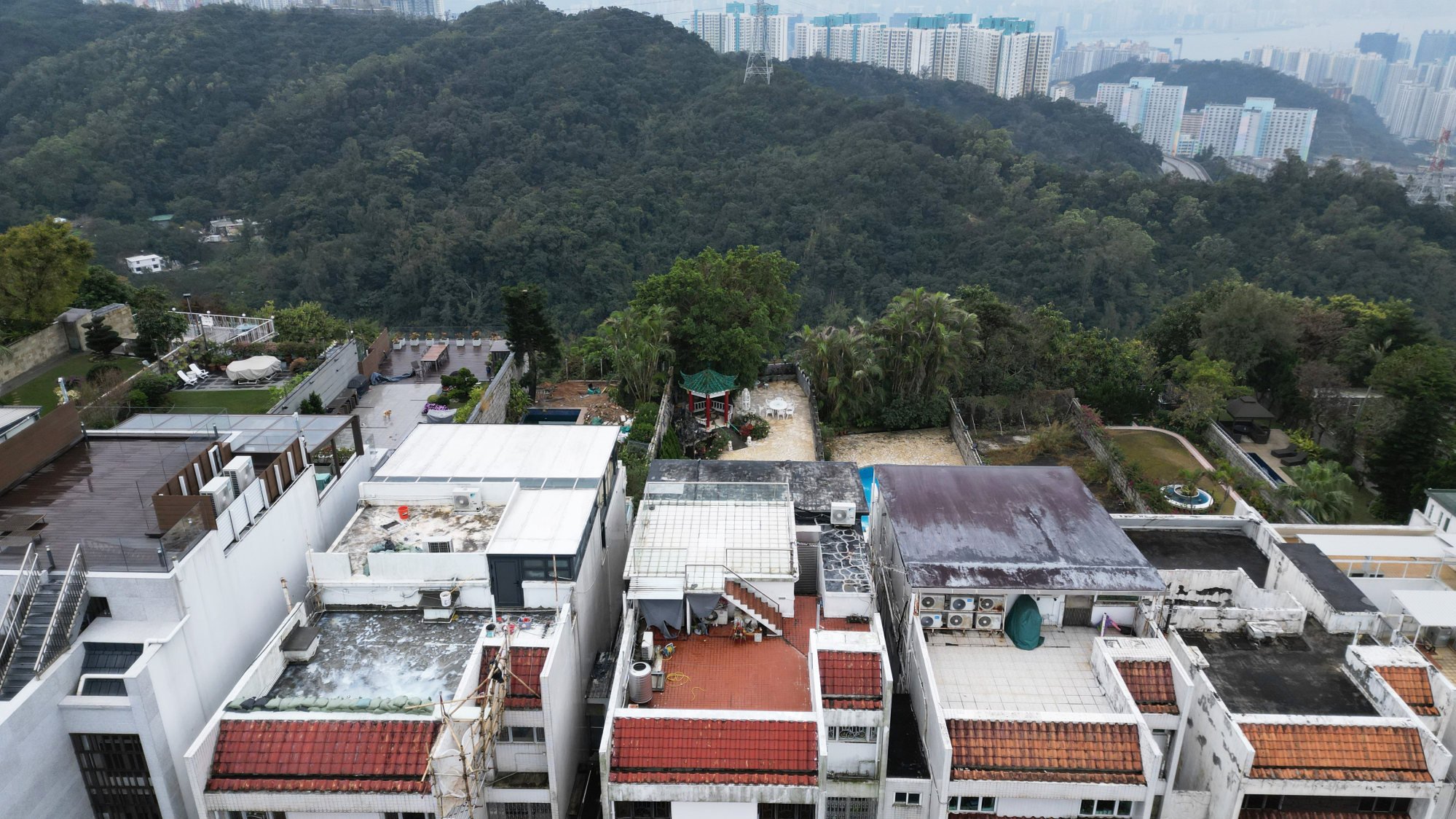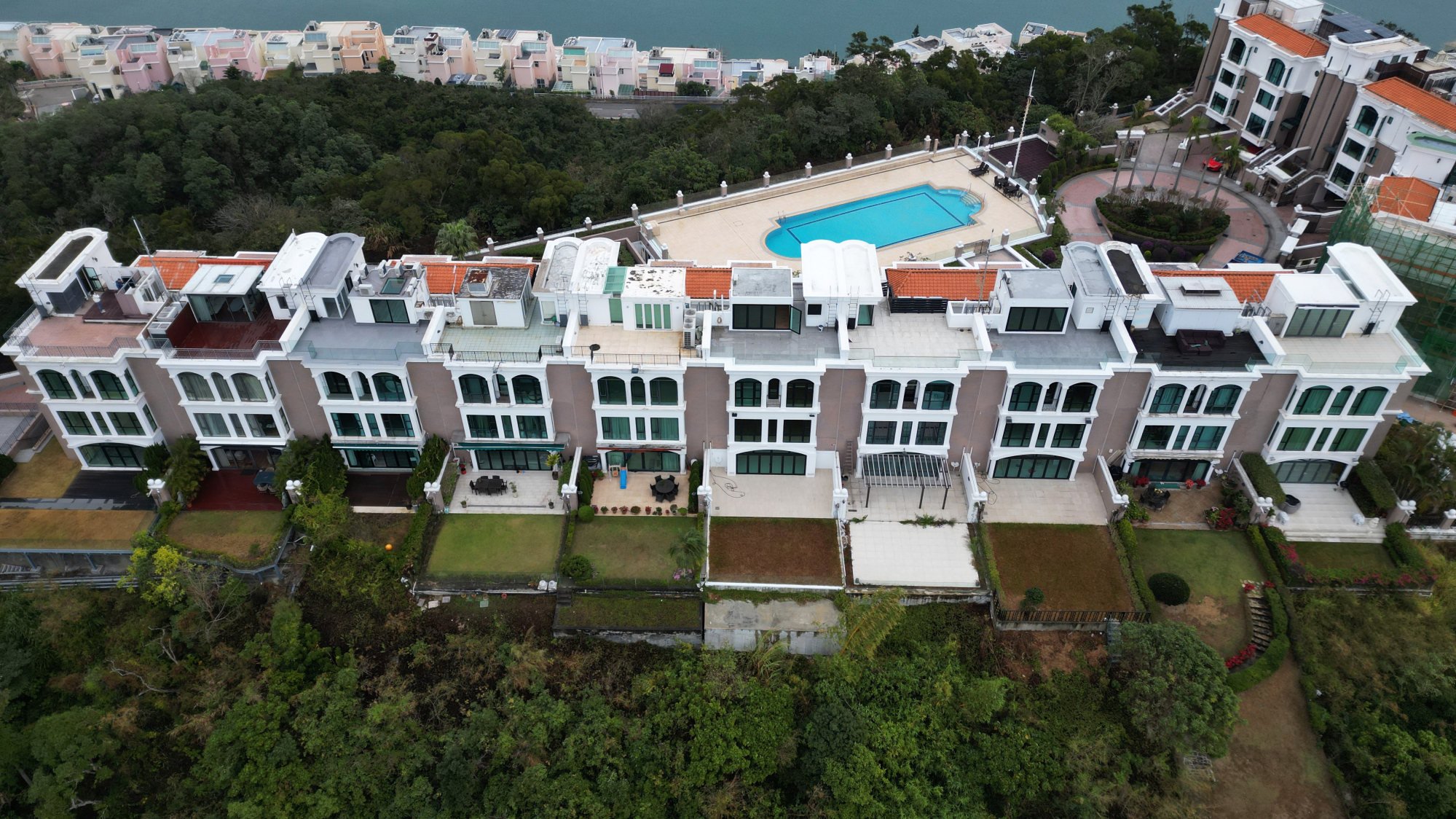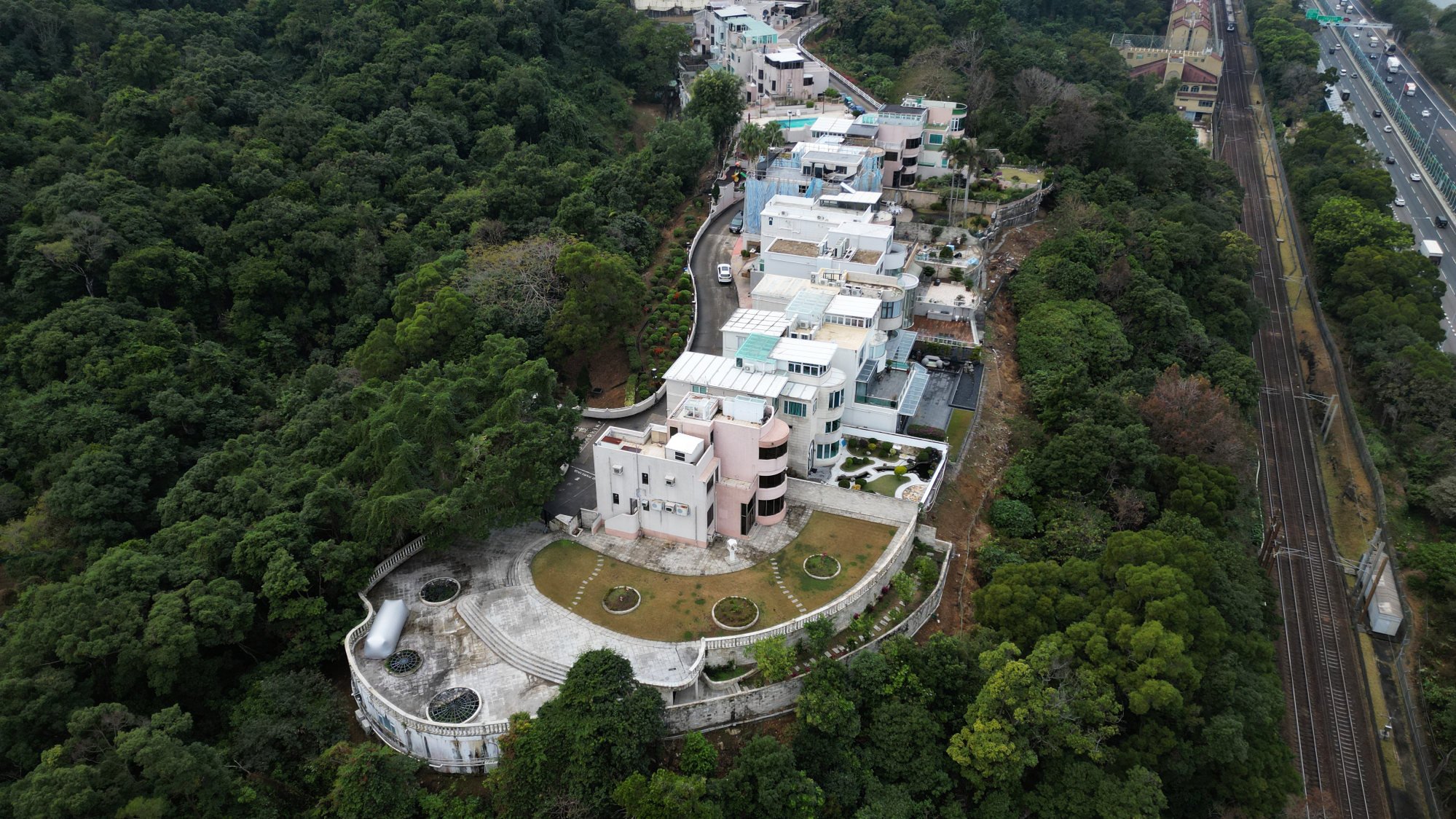
Exclusive | Rich privilege? Post finds most homes at 3 luxury Hong Kong estates suspected of having enlarged properties without official approval
- Nearly 90 per cent of houses at Flamingo Garden on Kowloon Peak, Villa Rosa in Tai Tam and Seaview Villas in Tai Po have suspected unauthorised additions
- Surveyor and structural engineer say works could be substandard and pose danger not just to occupants but also nearby homeowners
An overwhelming majority of homeowners at three upmarket estates in Hong Kong are suspected to have enlarged their properties on public land without approval and at essentially no cost for years, a Post investigation has found, exposing the scale of the malpractice in the land-scarce city.
Nearly 90 per cent of the 50 houses in Block B of Flamingo Garden on Kowloon Peak, Villa Rosa in Tai Tam and Seaview Villas in Tai Po studied by the Post – valued at between HK$50 million (US$6.39 million) and HK$119 million each – are suspected of having unauthorised additions at or near their properties. Some of these additions were built on government-owned slopes, sparking safety concerns among industry professionals.

Liber Research Community, an NGO focusing on land and development issues, released a report after the Redhill scandal studying the latest satellite images and government maps. It found 173 luxury houses citywide had occupied government land without approval.
Based on the findings, the Post investigated three estates to study the extent of such works, comparing drone footage with the government’s lot boundaries on the Lands Department database while cross-checking whether the owners had short-term tenancies that would allow them the extra space at full market rent.
The Post went through Buildings Department’s records to check whether the owners in question had applied for authorities’ consent on additions and alterations for the visible extra structures seen outside their properties, and checked the findings with two building professionals.
The months-long investigation found that such an apparent deviation from building and land rules was a common practice among many owners in these estates rather than an isolated case.
At Flamingo Garden, a luxury residential development near Kowloon Peak in Clear Water Bay, an overwhelming majority of the 16 houses in Block B were found to have add-ons, ranging from enclosed rooftops and extended floor areas to swimming pools not seen in the building plans.

At least 12 houses had extended private gardens on what is supposed to be government land. Buildings with windows were seen underneath the gardens of four such homes.
Similar garden extensions which deviated from the original plans – and with no official paperwork – were also seen at Villa Rosa, another upmarket estate atop Red Hill in Tai Tam.
Upon inquiry, the government confirmed that 10 out of the 16 three-storey homes there – each stretching more than 3,300 sq ft – had unauthorised structures either on their rooftops or in their gardens, while 13 homes had gardens that encroached on government land. The government stopped short of identifying the properties.

At least two houses had two narrow, below ground cement platforms beyond a glass fence at the edge of their unapproved extended gardens, which surveyors and engineers suggested could potentially serve as a basement.
At least eight homes had extensions to their outdoor areas that ran onto government-owned slopes, doubling their original size. In one case, a house had an extended private backyard that reached all the way down the slope approximately more than 20 metres beyond the government lot, with a concrete walkway built. Vegetation had apparently been removed from the encroaching area for the treated slope.
[Extra loading] may cause instability not only to their buildings but also the adjoining ones
Veteran surveyor Vincent Ho Kui-yip raised concerns over unauthorised add-ons beyond the lot boundaries after studying the Post’s findings, saying they could increase pressure on government-owned slopes and posed a “huge danger”.
“[Extra loading] may cause instability not only to their buildings but also the adjoining ones … it may also cause landslides or instability on the adjoining slopes,” Ho said, adding the risk could be made worse given the escalating frequency of extreme weather.
“It would have a huge, or consequential impact, on an area that we cannot assert.”
Veteran structural engineer Ngai Hok-yan also said such works, which had not passed through the approve-and-consent stage, could be substandard because there had been no proper scrutiny.
At Seaview Villas in Tai Po overlooking Tolo Harbour, nearly 90 per cent of the total – or 16 – had suspected unauthorised extensions.
In the most extreme case, the garden of one house had been expanded by approximately more than 9,000 sq ft based on a calculation using the government map, several times bigger than the building’s original floor area of 2,333 sq ft.
Hong Kong relaxing rules on illegal home structures not an amnesty: minister
Trees were spotted underground through suspected ventilation windows on the ground surface of the extended garden. There was what appeared to be a two-level structure beneath the garden, with multiple windows and air conditioners spotted on the external wall.
The extended area was only accessible through an entrance and a car gate that led directly to the house, the Post observed, suggesting the owner had exclusive access to it.
In another case, official records showed that one owner whose house had a rooftop with a glass structure and another extension with windows on the government-owned slope had received a removal order from the Buildings Department regarding the unauthorised additions. But a Post check last week found that these features were still visible, three years on.

The Post has reached out to those owners with suspected changes to their properties that deviated from the official plans. Only an owner at Villa Rosa replied, through a law firm, saying “they have dealt with all the works of the premises” with the Buildings Department.
A spokeswoman for the Development Bureau confirmed that no short-term tenancy had been granted for the concerned government land adjoining the houses at Seaview Villas and Flamingo Garden, adding that the Lands Department “would take land control actions as necessary”.
“The Buildings Department has issued removal orders to the houses in Seaview Villas found with unauthorised building works, and will continue to take enforcement action against suspected [cases],” she added, without revealing the number of houses found to be non-compliant at the Tai Po estate or Flamingo Garden, despite receiving the Post’s inquiry in November.
Hong Kong requires solution on illegal structures
Sources said the Buildings Department had confirmed unauthorised structures at Flamingo Garden and planned to take “appropriate follow-up action” based on existing laws.
At Redhill Peninsula, authorities earlier issued notices and orders to 74 of the 89 seaside houses requiring they restore their properties, cease occupation on government land, or both.
A check in mid-January found some houses were covered with scaffolding and safety nets, suggesting repair works were continuing, while the slope affected by the landslide remained barren.
Brian Wong Shiu-hung, a member of the Liber Research Community, said unauthorised extensions found at luxury residences were much more common than those detected in densely populated urban areas.
“It happens in every major prestigious neighbourhood in Hong Kong,” he said. “The government needs to show to the public that it is dealing with all the cases in every luxurious neighbourhood.”






